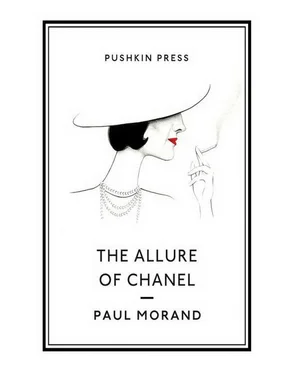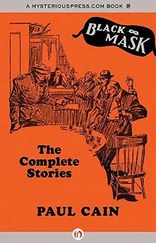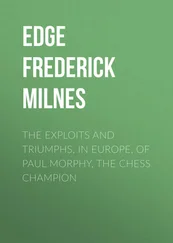Paul Morand
The Allure of Chanel
I arrived at rue Cambon for the first time. A New Year’s Eve party in 1921, I believe. “You’re all invited to Coco’s,” Misia had said to us; all, that is to say les Six, our group from Le Boeuf sur le Toit, the young people from Madame Alphonse Daudet’s salon, the regulars from the Jean Hugos’ studio at the Palais Royal, and those who attended our Saturday evening dinner parties at Darius Milhaud’s home. Chanel had not yet conquered Paris; the buffet had been laid out in the fitting rooms which had remained as they were in 1914, rather like a private clinic, in which Mme Langweil’s Coromandel screens had not yet unfurled their autumn leaves. Apart from her Deauville clients, or some polo players, friends of the Capel whom she had just lost, Chanel was very lonely, very shy, very closely watched; that evening Misia brought along people who would be Chanel’s life-long companions, the Philippe Berthelots, Satie, Lifar, Auric, Segonzac, Lipschitz, Braque, Luc-Albert Moreau, Radiguet, Sert, Elise Jouhandeau, Picasso, Cocteau, Cendrars (not Reverdy yet). Their presence alone marked the break with 1914, a past now dismissed, and a path that opened to the future, a future in which bankers would no longer be called Salomon, but Boy, or Lewis, where Satie would not write Espana, but Espagna, where perfumes would no longer be called Trèfle incarnate and Rêve d’automne, but would bear a reference number, as convicts do.
You wouldn’t have recognised Chanel’s genius; there was nothing yet to suggest her authority, her violent rages, her belligerence, nothing that revealed that character destined for greatness. Only Misia, with her commercial flair, had sensed that Chanel would rise to the top, had detected her serious side behind the frivolity, the precision of her mind and her talent, her uncompromising character. Behind an anxiety enlivened by so many guests, charming in her reticence, and of a shyness that was touching without one quite knowing why—perhaps because of her recent bereavement—Chanel appeared unsure of herself and as if she were questioning her life, no longer believing in happiness: we were bowled over. Did anyone suspect that we were dining, that evening, at the home of the exterminating angel of nineteenth-century style?
“Do you know what ‘faner’ means?” wrote Mme de Sévigné; ‘faner’ is to make hay; but it also means to make things wither or lose their freshness; merely by making an appearance, Chanel made the pre-war years wither, she caused Worth or Paquin to wilt. Chanel was a shepherdess; the training track, haymaking, manure, boot leather, saddle soap and the undergrowth smelt good to her. “Our century will have witnessed the revenge of the shepherdesses,” says Le Paysan parvenu. In Chanel’s case, it’s this ratio of “girls in petticoats and flat shoes” that Marivaux talks about, who are off to brave “the dangers of the city”, and prevail over them, with this sturdy appetite for vengeance that unleashes revolutions; Joan of Arc, too, was the revolt of the shepherdess; to quote Marivaux again: “Our century is ushering in the revenge of the shepherds; the peasant is dangerous, I warn you.” Chanel is of that breed. She said: “I have given women’s bodies back their freedom; that body perspired in formal clothing, beneath the lacework, the corsets, the underwear, the padding”; with Chanel the green countryside regained the upper hand, just as in literature, twenty years earlier, with Colette arriving in Paris in the same ‘schoolgirl’ smock, wearing the same large-bowed neck-tie, the same orphanage slippers. This spirit of revenge would never desert Chanel; it made her cut her beautiful, long hair that got caught in the laces of her corset; it wiped out an entire dream of a lost paradise, which was imaginary in any case, since she had initially loathed and fled from the fabulous childhood that so marked her.
The mystery of complexities! That’s where the dark side of Chanel lies, her suffering, her taste for causing harm, her need to castigate, her pride, her strict exactitude, her sarcasm, her destructive anger, the rigidity of a character that blows hot and cold, her abusive, destructive spirit; this belle dame sans merci would devise poverty for billionaires (all the while dining off gold plates), extravagantly expensive simplicity, seeking out what did not attract attention: the brass on yachts, naval blue and white, the waxed cloth from the hats of Nelson’s sailors, the black and white timber frames of the houses in Chester, the slate-grey shade of her lavender fields at Roquebrune, the picnics on the Brenta, those supper parties at La Pausa, without servants, at which one served oneself from plate warmers lined up on the game table. Never was snobbery better directed against oneself.
The brusqueness of Chanel’s character, the precision of her gestures or her phrases, the succinctness of her aphorisms dropped from a heart of flint and delivered in a torrent from the mouth of one of the Eumenides, her way of giving and taking back, of making gifts as if they were insults (“I am sending you these six statues of Venetian Negros,” she would ring up and say, “I can’t bear them any longer”), everything about her could be traced back to the depths of her frustrated childhood “among peasants who wanted their children to be taller than they themselves” (Bernard Palissy).
In 1900 one did not receive one’s ‘suppliers’, be they Monsieur Doucet or Madame Lanvin; from 1925 onwards, Chanel was not only received, but she made her hosts feel humble, she paid the hotel bills of grand-dukes, and she transformed their Highnesses into chambermaids; this vengeance extended to objects too, as she poured scorn on the sable concealed in a waterproof lining, cropped hairstyles ruthlessly, supplanted silks with the neutrality of jerseys, and replaced bright colours with faded parachutists’ uniforms. Might her refusal to marry the Duke of Westminster have been an unexpected way of blotting out Trafalgar and Waterloo? Her hot-tempered pauperism even took pleasure in cheapening precious gems, turning them into common stones; it allowed her to lend her sapphire necklaces to poor girls for a ball (whom she later accused of having stolen them).
Occasionally her nostrils, which were enlarged by a permanent anger, stopped quivering, and it was then that she revealed a certain weariness, and her heart unburdened the secret of a taciturn disposition; but that lasted only a moment, she could not cope without you; the following day, she couldn’t stand you any longer. Chanel was Nemesis.
That voice that gushed forth from her mouth like lava, those words that crackled like dried vines, her rejoinders, simultaneously crisp and snappy, a tone that grew more and more peremptory as age took its toll, a tone that was increasingly dismissive, increasingly contradictory, laying irrevocable blame, I heard them all, over entire evenings, in the St Moritz hotel where I met her in the winter of 1946, unemployed and with nothing to do for the first time in her life, and champing at the bit. She had gone into voluntary exile in the Engadine, unsure whether to return to rue Cambon, and waiting to become wealthy again. She felt both trapped by the past and gripped by time regained, a Guermantes of couture, a Verdurin of an age that was suddenly foreign to her, the De Gaulle years, and black bile flowed from eyes that still sparkled, beneath arched eyebrows increasingly accentuated by eyeliner, like sculpted basalt; Chanel, the volcano from the Auvergne which Paris was mistaken in believing was extinct.
Читать дальше












